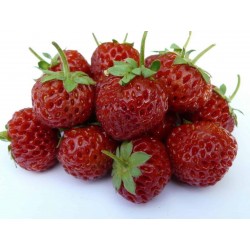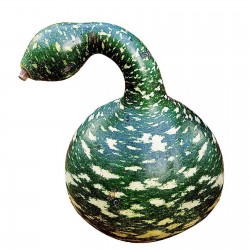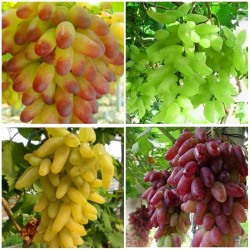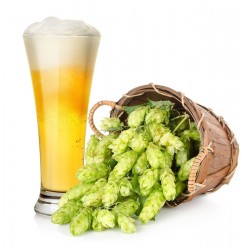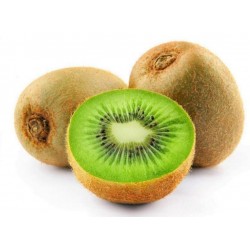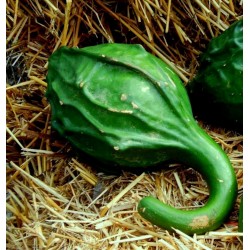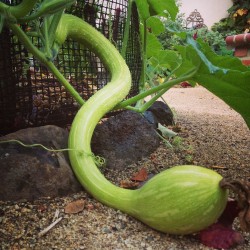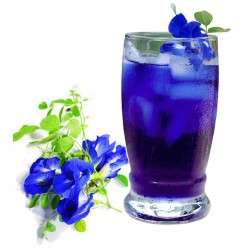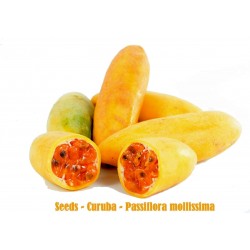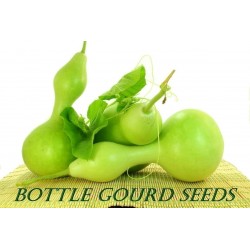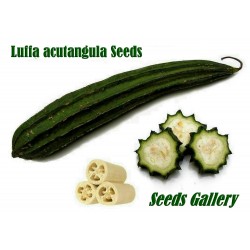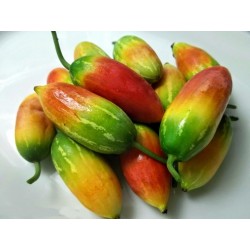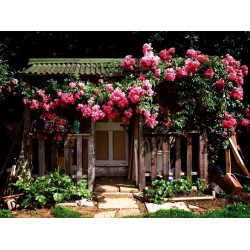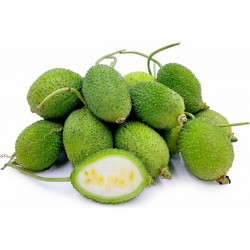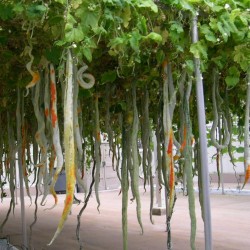Seeds Gallery EU,
5/
5
<!DOCTYPE html>
<html>
<head>
<meta http-equiv="Content-Type" content="text/html; charset=UTF-8" />
</head>
<body>
<h2><strong>Хмель обыкнове́нный семена (лат. Húmulus lúpulus)</strong></h2>
<h2><span style="color: #ff0000;"><strong>Цена за пакет из 10 семян.</strong></span></h2>
<p><b>Хмель обыкнове́нный</b><span>, или </span><b>Хмель вью́щийся</b><span> (</span>лат.<span> </span><span lang="la" xml:lang="la">Húmulus lúpulus</span><span>) - </span>вид<span> </span>травянистых<span> </span>многолетних растений<span> </span>рода<span> </span>Хмель<span> (</span><i><span lang="la" xml:lang="la">Humulus</span></i><span>) семейства </span>Коноплёвые<span>(</span><i><span lang="la" xml:lang="la">Cannabaceae</span></i><span>).</span></p>
<h2><span class="mw-headline">Распространение и среда обитания</span></h2>
<p>Растение широко распространено в умеренном климате<span> </span>Евразии<span> </span>и<span> </span>Северной Америке; встречается также на севере<span> </span>Африки<span> </span>(в<span> </span>Марокко). Родина растения неизвестна.</p>
<p>В России распространён почти повсеместно в<span> </span>европейской части<span> </span>и<span> </span>Западной Сибири, за исключением<span> </span>Крайнего Севера, на<span> </span>Кавказе<span> </span>и<span> </span>Алтае.</p>
<p>Произрастает на богатых почвах по долинам рек, оврагам, в приречных и<span> </span>байрачных<span> </span>сырых широколиственных лесах, по кустарниковым зарослям, в ивняках и ольшаниках.</p>
<p>Издавна разводится на специальных плантациях.</p>
<div class="thumb tleft">
<div class="thumbinner"><img alt="" src="https://upload.wikimedia.org/wikipedia/commons/thumb/6/61/K%C3%B6hler%27s_Medizinal-Pflanzen_in_naturgetreuen_Abbildungen_mit_kurz_erl%C3%A4uterndem_Texte_%28Plate_58_a%29_%286972248550%29.jpg/220px-K%C3%B6hler%27s_Medizinal-Pflanzen_in_naturgetreuen_Abbildungen_mit_kurz_erl%C3%A4uterndem_Texte_%28Plate_58_a%29_%286972248550%29.jpg" width="220" height="279" class="thumbimage" />
<div class="thumbcaption">
<div class="magnify"></div>
Ботаническая иллюстрация<span> </span>из книги<span> </span><i>Köhler’s Medizinal-Pflanzen</i>, 1887</div>
</div>
</div>
<h2><span></span><span class="mw-headline">Ботаническое описание</span></h2>
<div class="thumb tright">
<div class="thumbinner"><img alt="" src="https://upload.wikimedia.org/wikipedia/commons/thumb/f/fb/Humulus_lupulus_012.jpg/220px-Humulus_lupulus_012.jpg" width="220" height="218" class="thumbimage" />
<div class="thumbcaption">
<div class="magnify"></div>
Различные формы листьев хмеля обыкновенного</div>
</div>
</div>
<p>Многолетняя лиана.<span> </span>Стебель, вьющийся<span> </span>по часовой стрелке, четырёхгранный, полый внутри, покрыт острыми<span> </span>шипами, до 7 м в длину. Корневище длинное, ползучее.</p>
<p>Листья при основании дланевидно трёх-пятилопастные, глубоко сердцевидные, с яйцевидными заострёнными лопастями, по краю крупнопильчатые, супротивные,<span> </span>длинночерешковые, с межчерешковыми прилистниками; верхние листья цельные.</p>
<p>Растение<span> </span>двудомное. Мужские<span> </span>соцветия<span> </span>на ветвях второго порядка в виде<span> </span>метельчатого<span> </span>соцветия, состоящего из<span> </span>дихазиев, переходящих в<span> </span>завитки. Мужские<span> </span>цветки<span> </span>мелкие, зелёные, с пятилистным околоцветником и пятью<span> </span>тычинками<span> </span>с прямыми нитями. Женские<span> </span>цветки<span> </span>в шишковидных сложных соцветиях. Чешуи шишек, расположенные попарно, представляют собой прилистники неразвившихся листьев, в пазухе которых находятся двойные завитки из двух-четырёх или шести цветков, без цветков первого порядка. Прицветники при плодах разрастаются и несут жёлтые желёзки, содержащие<span> </span>лупулин. Женские цветки состоят из пестика, у основания окружённого плёнчатым цельнокрайним чашевидным околоцветником. Цветёт в июле — августе.</p>
<p>Плод —<span> </span>орех<span> </span>со спирально свёрнутым<span> </span>зародышем, созревает в августе — сентябре.</p>
<h2><span></span><span class="mw-headline">Химический состав</span></h2>
<p>В<span> </span>соплодиях<span> </span>хмеля содержится<span> </span>эфирное масло<span> </span>(до 3 %, по другим данным, 0,3—1,8 %<sup class="reference">[2]</sup>), хмелевые смолы,<span> </span>воск,<span> </span>камедь,<span> </span>горькие вещества<span> </span>(16—26 %, по другим данным, 11—21 %<sup class="reference">[2]</sup>),<span> </span>валериановая,<span> </span>n-аминобензойная<span> </span>и<span> </span>хмелевая кислоты,<span> </span>гликозид<span> </span>лупулин,<span> </span>каротин,<span> </span>аскорбиновая кислота,<span> </span>холин,<span> </span>тиамин,<span> </span>никотиновая кислота, жёлтое красящее вещество,<span> </span>дубильные вещества<span> </span>(3 %),<span> </span>флавоноиды. Молодые побеги и листья содержат 0,095—0,19 % аскорбиновой кислоты.</p>
<p>Эфирное масло хмеля ароматное, светло- или тёмно-жёлтого цвета, главной составной частью его являются<span> </span>мирцен<span> </span>(30—50 %) и<span> </span>мирценол. В состав масла входят также<span> </span>линалоол,<span> </span>гераниол,<span> </span>фарнезен,<span> </span>кариофиллен,<span> </span>лупарол,<span> </span>лупаренол,<span> </span>эфиры<span> </span>муравьиной,<span> </span>уксусной,<span> </span>масляной<span> </span>и других кислот.</p>
<p>Хмелевые смолы представляют собой сложный комплекс веществ (смесь<span> </span>фенолов,<span> </span>смоляных кислот<span> </span>и<span> </span>нейтральных смол). Количественное содержание фенолов и смоляных кислот определяет пивоваренную ценность того или иного сорта хмеля. Содержание горьких веществ изменяется в зависимости от сорта хмеля и условий возделывания (климатических и почвенных), а также от сроков уборки. Наибольшее количество горьких веществ наблюдается в начале побурения соплодий.</p>
<h2><span></span><span class="mw-headline">Хозяйственное значение и применение</span></h2>
<div class="thumb tleft">
<div class="thumbinner"><img alt="" src="https://upload.wikimedia.org/wikipedia/commons/thumb/4/46/Zatec_CZ_Rimg0253.jpg/220px-Zatec_CZ_Rimg0253.jpg" width="220" height="165" class="thumbimage" />
<div class="thumbcaption">
<div class="magnify"></div>
Хмель в озеленении</div>
</div>
</div>
<p>Соплодия хмеля, так называемые «шишки», в прошлом употребляли для окраски тканей<sup class="reference">[3]</sup>.</p>
<p>Пчёлы<span> </span>собирают с хмеля<span> </span>пыльцу.</p>
<p>Растение<span> </span>декоративное, вьющееся, культивируется для получения шишек и озеленения склонов, беседок, заборов, балконов.</p>
<p>Из длинных стеблей можно получать волокно, пригодное для изготовления грубой мешковины и верёвок<sup class="reference">[3]</sup>.</p>
<h3><span></span><span class="mw-headline">Применение в пищевой промышленности</span></h3>
<div class="thumb tright">
<div class="thumbinner"><img alt="" src="https://upload.wikimedia.org/wikipedia/commons/thumb/3/3f/Houblon.jpg/220px-Houblon.jpg" width="220" height="147" class="thumbimage" />
<div class="thumbcaption">
<div class="magnify"></div>
Плантации хмеля</div>
</div>
</div>
<p>Соплодия<span> </span>хмеля, собранные в начале созревания, издавна применяются в<span> </span>пивоварении<span> </span>и<span> </span>хлебопечении<span> </span>(для изготовления жидких дрожжей), при выпечке некоторых сортов хлеба. Дубильные вещества хмеля регулируют брожение<span> </span>сусла<span> </span>и предотвращают прокисание<span> </span>пива. Эфирное масло, смолы, лупулин придают пиву своеобразный аромат и горьковатый вкус<sup class="reference">[3]</sup>.</p>
<p>Молодые подземные побеги хмеля, только что вышедшие на поверхность, весной употребляют в пищу в овощных блюдах как<span> </span>спаржу<span> </span>или<span> </span>цветную капусту<span> </span>и для<span> </span>зелёных щей<span> </span>как<span> </span>крапиву<sup id="cite_ref-4" class="reference">[4]</sup>.</p>
<h3><span></span><span class="mw-headline">Применение в медицине</span></h3>
<p>В качестве<span> </span>лекарственного сырья<span> </span>используют соплодия хмеля обыкновенного (лат. <span lang="la" xml:lang="la">Strobilus Lupuli</span>) или женские «шишки» хмеля обыкновенного (<span lang="la" xml:lang="la">Amenta Lupuli</span>). Соплодия с плодоножками собирают в июле — августе, когда они имеют желтовато-зелёный цвет. Сушат быстро в тени или в хорошо проветриваемых помещениях<sup class="reference">[2]</sup>.</p>
<p>Эфирное масло и<span> </span>экстракт<span> </span>используются в составе комплексных препаратов сердечно-сосудистого действия и при заболеваниях почек.</p>
<p>Экстракт входит в препарат «Уролесан»<sup class="reference">[2]</sup>.</p>
<p>Хумулин и эфирное масло обладают успокаивающим (седативным) действием, входят в состав препарата «Валокордин», который рекомендуют при<span> </span>сердечно-сосудистых неврозах,<span> </span>стенокардии,<span> </span>спазмах кишечника.</p>
<p>Шишки хмеля входят в состав<span> </span>успокоительного чая<sup class="reference">[2]</sup>, их отвар употребляют как болеутоляющее при<span> </span>почечнокаменной болезни<span> </span>и воспалении мочевого пузыря и для лечения<span> </span>пиелонефрита<sup class="reference">[2]</sup>, при<span> </span>бессоннице, в качестве<span> </span>седативного<span> </span>средства, при<span> </span>неврастении, а также при<span> </span>цистите<span> </span>и частых позывах к<span> </span>мочеиспусканию, иногда как<span> </span>противоцинготное.</p>
<p>Экстракт из шишек хмеля обладает<span> </span>эстрогенной<span> </span>активностью и изучается с целью<span> </span>гормонотерапии. Из шишек выделены вещества, обладающие<span> </span>антибактериальным<span> </span>действием, их используют при производстве косметических средств<sup class="reference">[3]</sup>.</p>
<p>Экстракты из шишек хмеля — составная часть (часто основа) ряда лечебных кремов от<span> </span>угрей,<span> </span>перхоти, для лечения<span> </span>дерматитов.</p>
<div class="thumb tright">
<div class="thumbinner"><img alt="" src="https://upload.wikimedia.org/wikipedia/commons/thumb/3/3d/Hopfenmaschine.JPG/220px-Hopfenmaschine.JPG" width="220" height="165" class="thumbimage" />
<div class="thumbcaption">
<div class="magnify"></div>
Собранный хмель</div>
</div>
</div>
<p>В народной медицине шишки хмеля применяли как аппетитную горечь и<span> </span>лактогенное<span> </span>средство (настой)<sup class="reference">[3]</sup>, при<span> </span>болезнях селезёнки,<span> </span>печени<span> </span>и<span> </span>жёлчного пузыря,<span> </span>гастрите,<span> </span>туберкулёзе лёгких, цистите,<span> </span>отёках,<span> </span>малярии,<span> </span>экземе, при<span> </span>нарушении обмена веществ, при чрезмерном половом возбуждении; корни — при<span> </span>мигрени,<span> </span>желтухе.</p>
<p>Растение использовали наружно как<span> </span>болеутоляющее<span> </span>при<span> </span>невралгии,<span> </span>радикулите,<span> </span>подагре,<span> </span>ушибах, для<span> </span>ароматических ванн, для лечения<span> </span>фурункулёза,<span> </span>язв,<span> </span>лишаёв<span> </span>и<span> </span>экзем; отваром шишек хмеля моют голову от перхоти и для укрепления волос при раннем<span> </span>облысении.</p>
<p>В народной<span> </span>ветеринарии<span> </span>хмель употребляли при отёках, для улучшения пищеварения и как<span> </span>противовоспалительное.</p>
<p>Ввиду<span> </span>токсичности<span> </span>растения при внутреннем применении его необходимо строго дозировать приём.</p>
</body>
</html>
MHS 62

